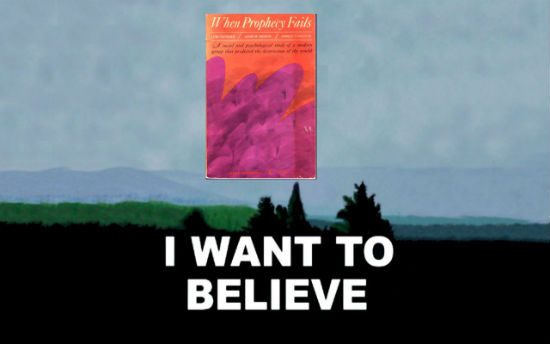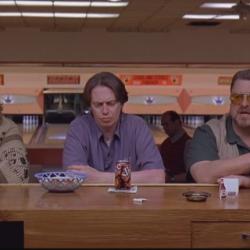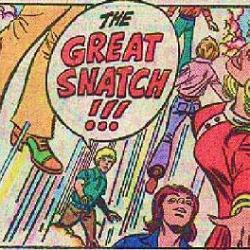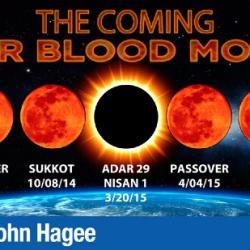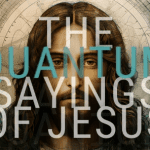Back in January, Undine shared the story of “Mrs. Hingley and the Christmas Martians.”
Jean Hingley was a modest, working-class British housewife who lived with her husband near Birmingham. Her otherwise terribly normal life was punctuated by one very strange event, which caused her to be interviewed by the Flying Saucer Review in 1979:
On the morning of January 4, Jean saw Cyril off to his job at a local cement works. After he left, she noticed a light in the back garden. Assuming that Cyril had left a light on in their car port, she went to check, but found the light was off. Mrs. Hingley then noticed an orange light hovering over the garden, which gradually turned white. She heard a sound that she described as “Zee…zee…zee…” Then “three beings” floated past her and went through the open back door of her house. The winged creatures glowed with a bright light and hovered about a foot above the ground. They were wearing silvery-green tunics and silver waistcoats, with transparent “fish-bowl” style helmets over their heads. They had no eyebrows or ears. Their faces were corpse-white with glittering black eyes.
Understandably, Mrs. Hingley was petrified with fear. So was her Alsatian dog, Hobo. He staggered about as if he had been drugged, and finally dropped to the floor, staring blankly into space. After a few minutes, her terror dissipated. “I felt as if I were lifted up…I felt as if I were a different person; as though I was in Heaven although I was still at home. I seemed to float into the lounge.” She saw that the uninvited visitors were attacking her little artificial Christmas tree, shaking and tugging at it like a trio of demented Santa’s elves. Once their examination of the tree was over, the beings floated around the room, touching everything inquisitively.
Eventually, Mrs. Hingley is able to communicate with her visitors. They chat about Christmas and the birth of Jesus. They talk about church and Heaven. She offers them mince pie. After they depart, she called the police and told them what she had just witnessed.
Mrs. Hingley was mocked in the newspapers with jokes about her reports of “Mince Pie Martians,” but the fact that she offered them pie (and, apparently, cigarettes — which they declined) makes me think fondly of her. She was bewildered and terrified, but still unfailingly hospitable. “Be not forgetful to entertain strangers: for thereby some have entertained angels unawares.”
As Undine notes, Jean Hingley did not seem to be either a prankster or someone experiencing a breakdown of some kind, so it is difficult to explain her strange account. (I suspect that Paul Cunningham might have a theory worth considering.)
“I don’t know what to think,” Hingley said.
“I don’t know what to think” would have been a wiser, healthier conclusion for Dorothy Martin, who did not encounter alien visitors in 1954 at her home in Oak Park, Illinois. This was a great disappointment for Martin and for her small group of followers, because on Christmas Eve that year they were all certain that she would.
Martin, you see, said she had been communicating with space aliens through a form of automatic writing. Beings from the planet “Clarion” had warned her of a coming apocalypse and had promised her that she and her followers would be rescued in their space ship. The rescue was prophesied to happen on December 17, 1954, at 4 p.m.
It was then rescheduled for just after midnight on the 18th.
And rescheduled again for the 21st.
And then yet again for Christmas Eve.
Whet Moser offered a wry summary of this history for Chicago magazine back in 2011:
In December 1954, the Tribune ran a short item about a Michigan doctor who foresaw the end of the world: “Doctor Warns of Disasters in World Tuesday.”
The doctor, fortuitously named “Charles Laughead,” a former staff physician at Michigan State, forecast a tidal wave, a volcanic action, and “a rise in the ground extending from Hudson’s bay [in Canada] to the Gulf of Mexico which will seriously affect the center of the United States.”
But Dr. Laughead was merely serving as the spokesman for Dorothy Martin, a 54-year-old Oak Park housewife, who herself was simply relaying communications from “outer space.” Martin’s extraterrestrial sources from the planet Clarion informed her that “there will be much loss of life, practically all of it, in 1955…. It is an actual fact that the world is in a mess. But the Supreme Being is going to clean house by sinking all of the land masses as we know them now and raising the land masses from under the sea.”
Observers of history and residents of the center of the United States are aware that this did not occur, though Laughead claimed that a December 21 earthquake near Eureka, California “might have been part” of the “advance information” on Martin’s prophecies. The next week, Dorothy Martin was placed under psychiatric care to prevent the Oak Park police of charging her with “inciting to riot,” after a “boisterous crowd… blocked traffic on Christmas Eve outside the Martin home at 707 S. Cuyler Ave., Oak Park, after Mrs. Martin had predicted that she and her associates would be ‘lifted up’ that night by spacemen. …
What Martin and Laughead didn’t know was that their hearty band of future space travelers had been infiltrated: by University of Minnesota social psychologist Leon Festinger and his colleagues. After reading a newspaper article about Martin, Festinger rounded up a handful of psychologists and psychology students to pose as converts to Martin’s small group of “Seekers,” gaining their trust and recording the group’s actions during their not-Final Days.
In 1956, Festinger, Henry W. Riecken, and Stanley Schachter produced When Prophecy Fails: A social and psychological study of a modern group that predicted the destruction of the world, an account of their time inside Martin’s group. …
Martin had been exposed to theosophy and Scientology, and Laughead was a former Christian missionary and mystical dilettante who was enthralled by UFOs. Between them they assembled a patchwork belief system that combined elements of Christianity, Scientology, atomic age sci-fi, and Paradise Lost.
Moser goes on to describe the details of this baroque belief system, which is really quite something.
Julie Beck revisited this same history for the Atlantic three Christmases ago: “The Christmas the Aliens Didn’t Come.” Beck manages to keep a straight face through most of that article by focusing less on the quirky specifics of Martin & Co.’s beliefs and more on the psychological insights gleaned by Festinger’s team of field researchers:
Faced with evidence that directly contradicted their beliefs, the group experienced cognitive dissonance—two thoughts that are inconsistent. This is uncomfortable, and the natural instinct is to try to make it go away. People can do that in a few different ways: by trying to forget about the dissonant things, by changing their minds, or by looking for new information that gets rid of the contradiction.
Sometimes this can mean, as the alien-less Christmas demonstrated, people can react to evidence against their beliefs by leaning in to those beliefs even more. …
Both Beck and Moser quote extensively from the interviews that Dr. Laughead gave with local news reporters on the night of the fourth and final failure of the prophecy. You’ll want to read those, as the poor doctor’s flailing answers are both hilarious (as Moser says) and revealing (as Beck writes).
Reading those accounts, I’m reminded of Christian Smith’s description of white evangelicalism as “embattled and thriving.” Evangelicalism thrives, Smith argued, because it perceives itself as embattled. It thrives most by choosing to perceive itself that way — whether or not that is actually the case.
I can’t help but wonder if things might have been different for Martin et. al. if their final prophesied encounter hadn’t been quite so public. If their final disappointment had not occurred in front of dozens of curious onlookers and local reporters with camera and microphones (not to mention note-taking psychological researchers), then perhaps they might have been better able to just drop the whole thing, quietly accepting the failure of their prophecies and moving on with their lives.
But all that publicity was something the doomsday prophets sought. They invited the reporters and issued press releases to draw that large crowd of onlookers. They raised the stakes themselves, staking their identity on the validity of their prophecy and calling forth witnesses to hold them to it. By turning it into an existential question of identity they made any concession or admission of failure all but impossible.
Here at this blog, I’m compelled to note where this all took place — in Oak Park, Illinois, just a short hop from the fictional home of Rayford Steele and New Hope Community Church, the settings for much of the World’s Worst Books.
The fact that Left Behind and its sequels are set in the same Chicago suburbs as the seminal study on When Prophecy Fails might lead someone unfamiliar with the former books to suspect that this was a deliberate literary choice. Those who have actually read any of the Left Behind novels, however, are aware that co-authors Jerry B. Jenkins and Tim LaHaye did not make literary choices. Their story happens to be set just down the road from Dorothy Martin’s former home because that’s where Jenkins lived for much of his career.
Yet the parallels between Martin and LaHaye are illuminating. Both insisted that they bore an urgent message and a unique role in the cosmic battle between light and darkness. Both began prophesying the End of the World back in the 1950s. Both insisted that natural disasters, calamity and worldwide societal collapse were imminent — that the present year, or decade, was certain to come to an unnatural end.
And they were both wrong about that. Wrong in the 1950s, and in the 1960s, and in the 1970s, and in the 1980s.
Dorothy Martin — who later renamed herself “Sister Thedra” — died in 1992 at the age of 92, so her failed predictions have had to carry on without her in the 1990s, the 2000s, the 2010s. Tim LaHaye also enjoyed a long career as a failed prophet before dying at the age of 90 in 2016. His failed predictions have outlived him as well and show no signs of letting up. LaHaye may be gone, but his prophecies will keep on being just as wrong for decades and centuries to come.
Meanwhile, I haven’t been able to find any news at all of Jean Hingley since her extraordinary encounter back in 1979. She was 43 years old then, so she’d be about 82 now. I like to think she’s celebrating a quiet Christmas at home with Cyril, keeping some fresh pie at hand for any visitors who might stop by — no matter where they’re from.


